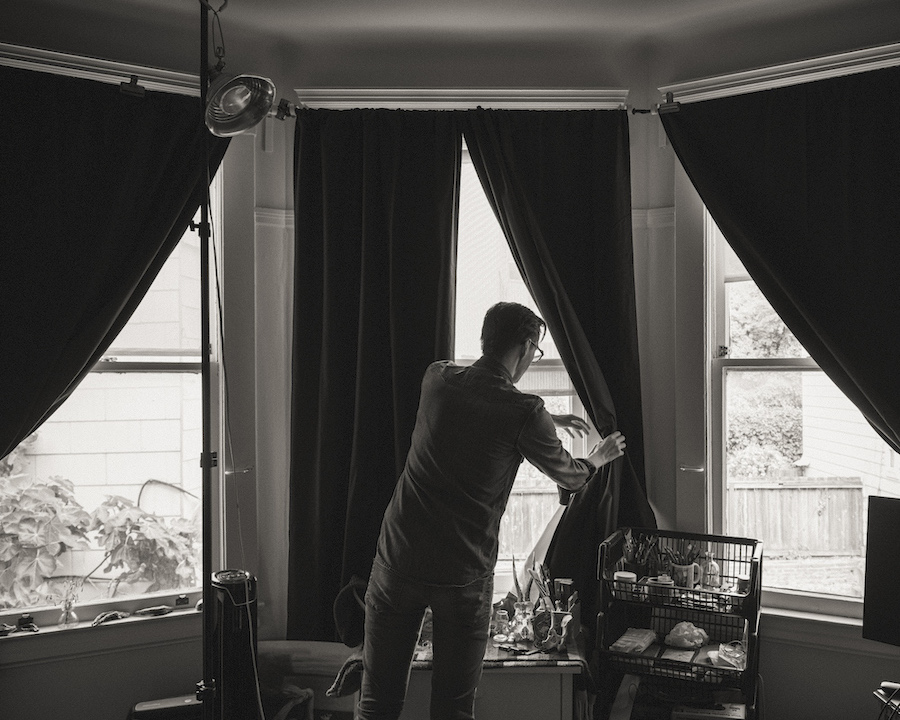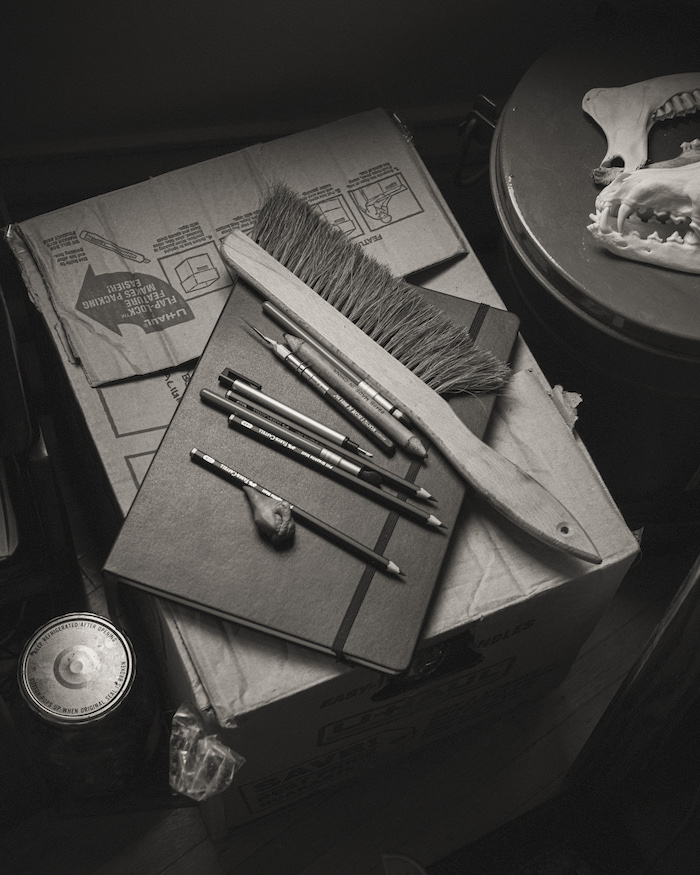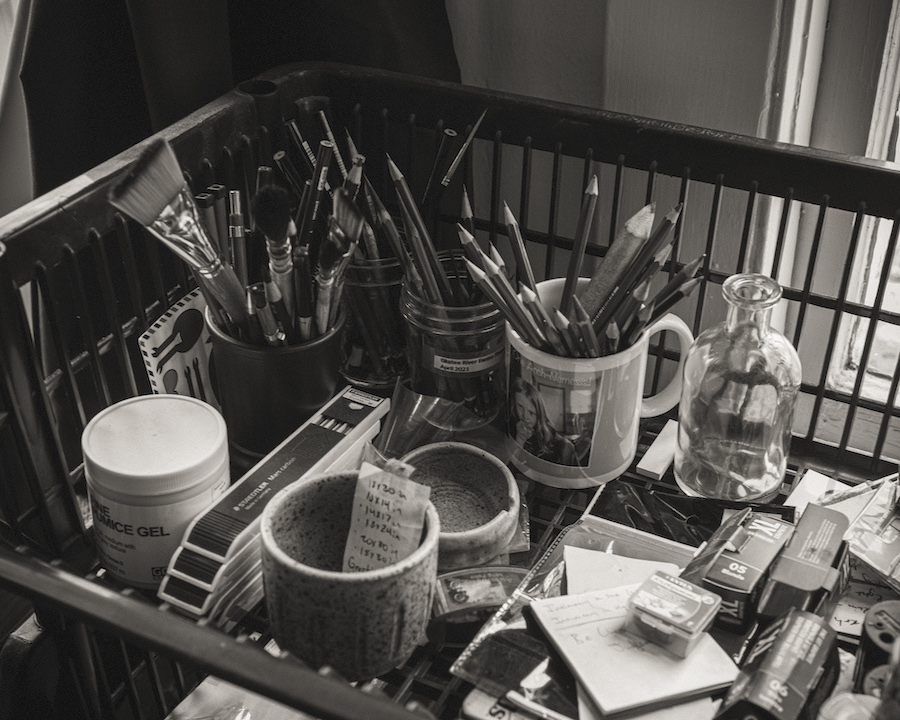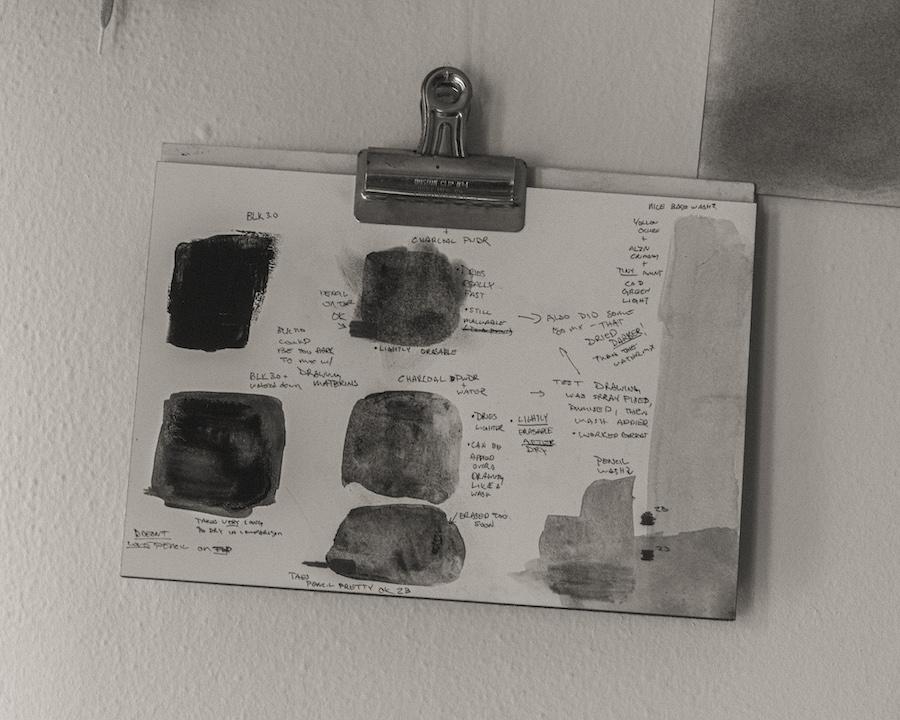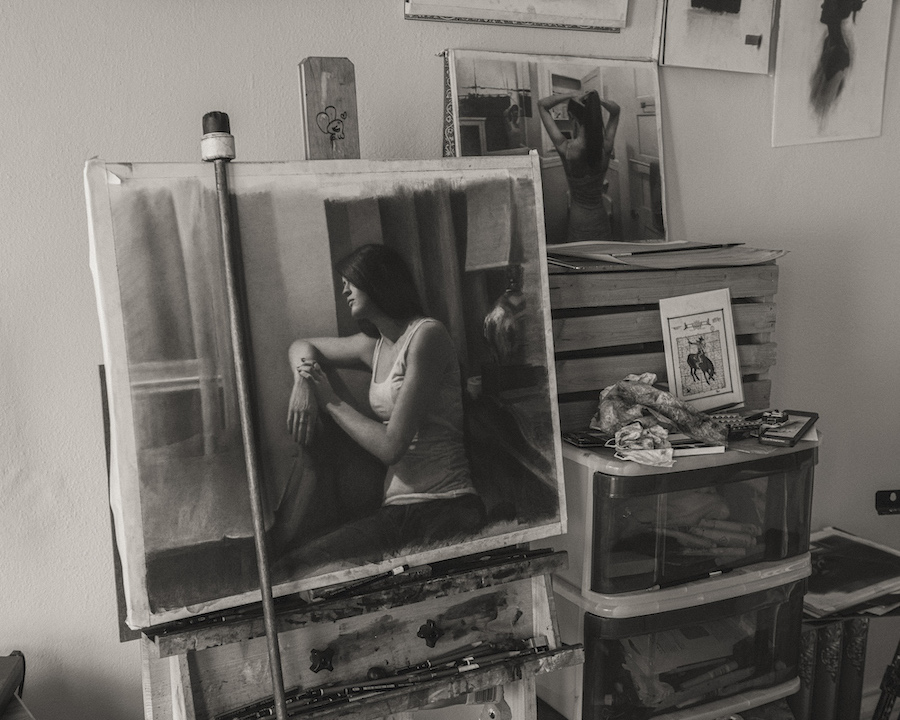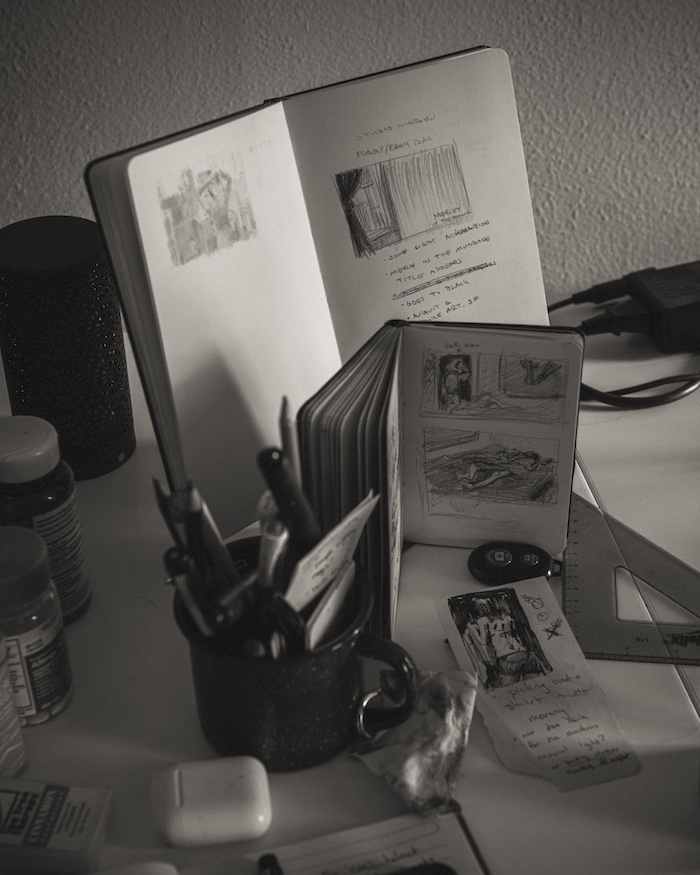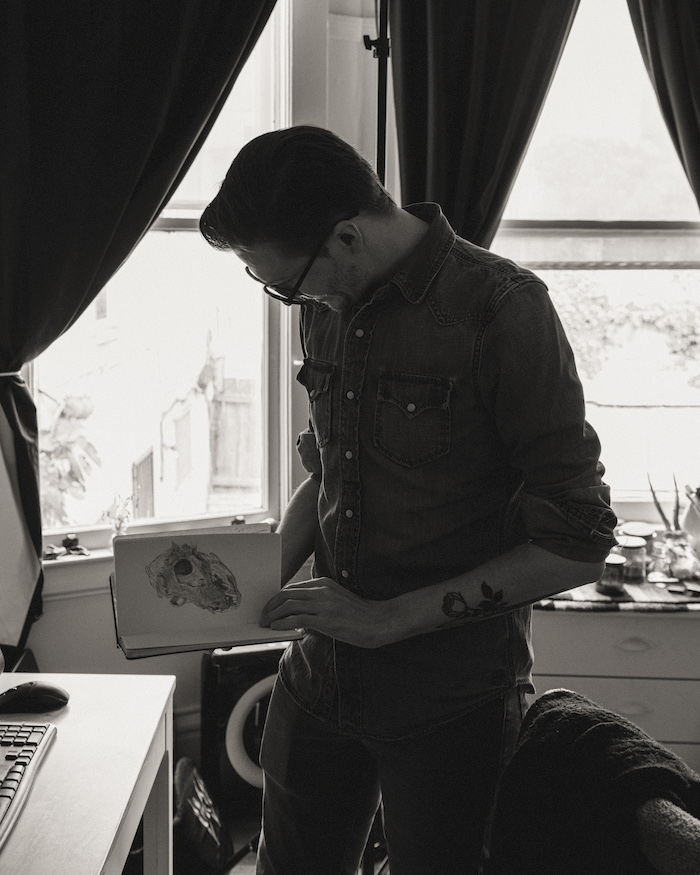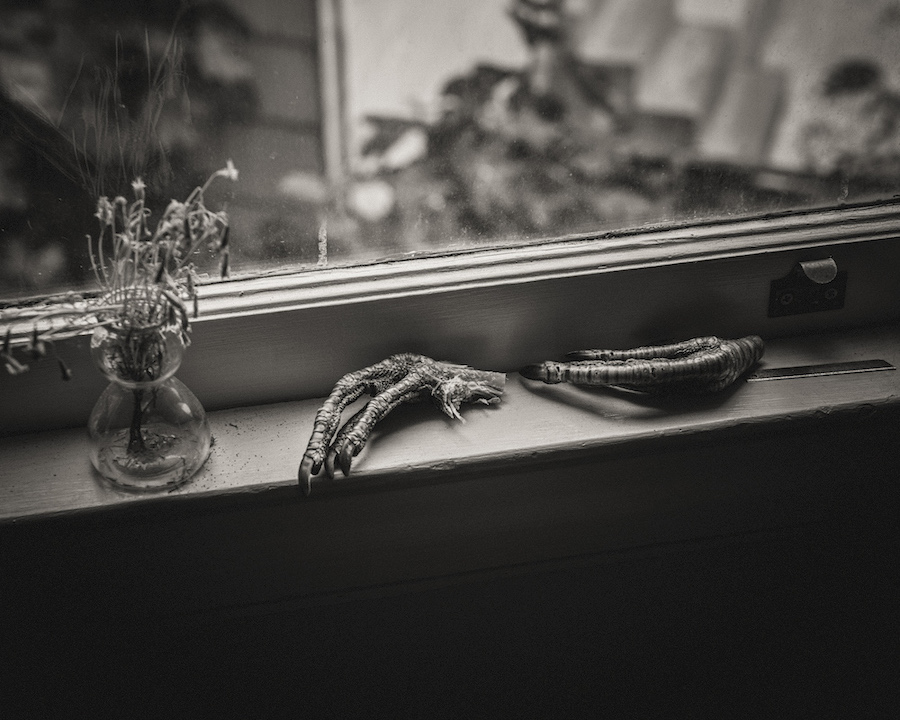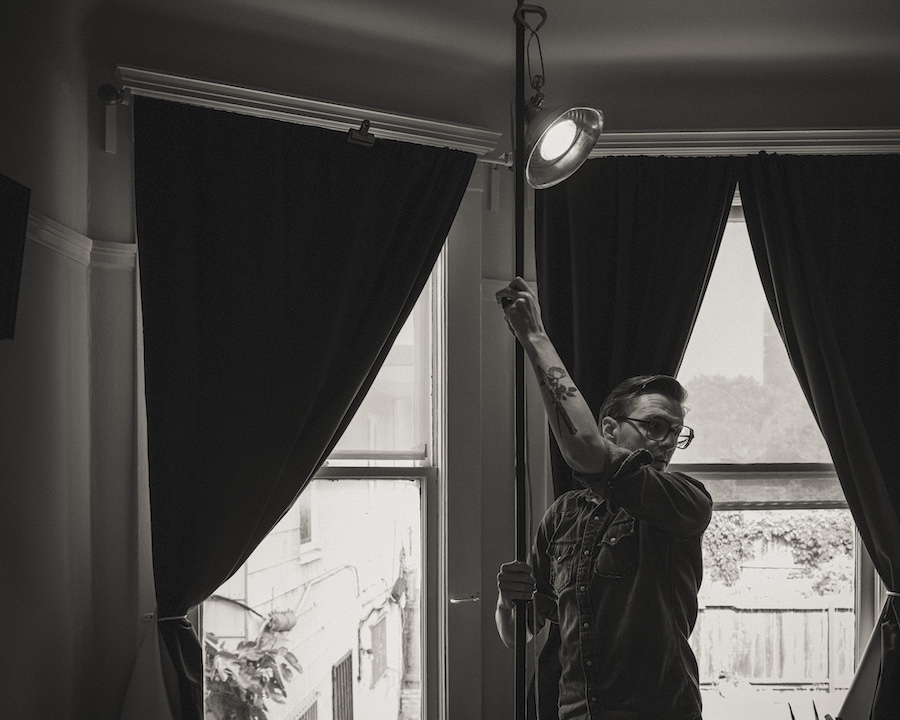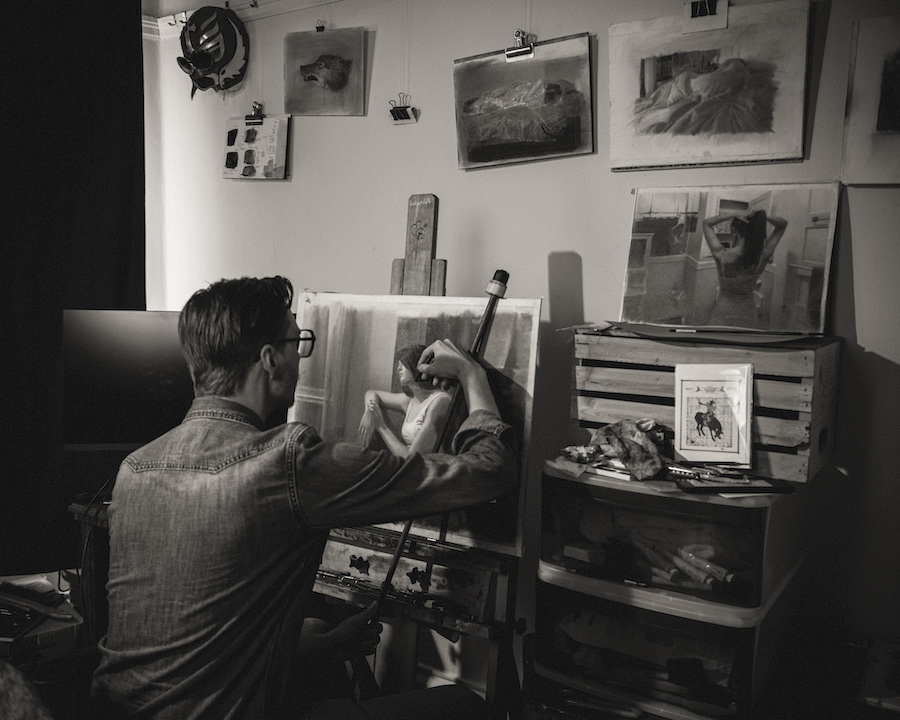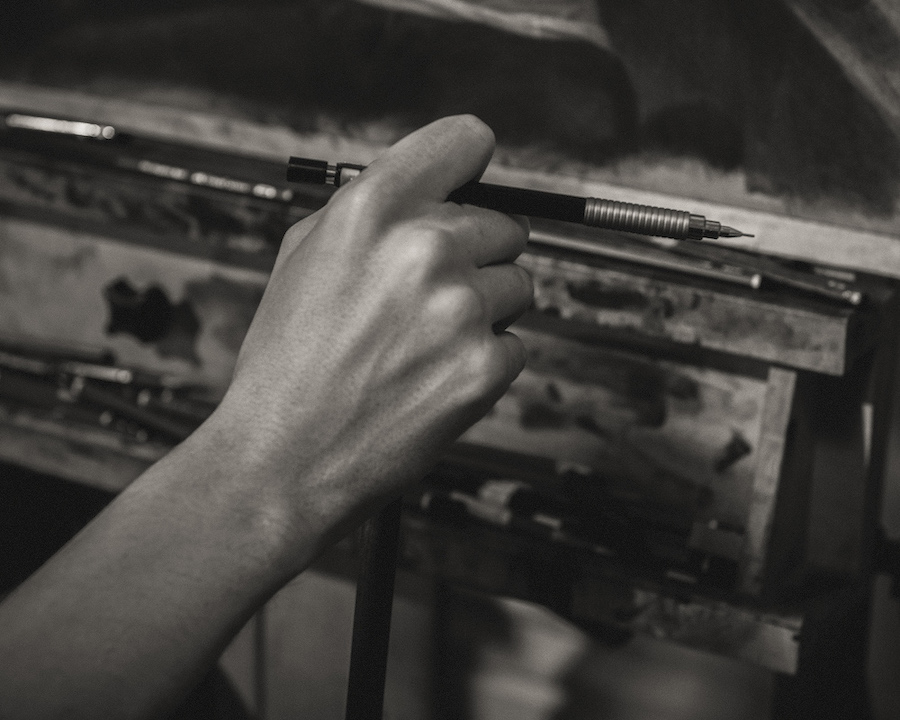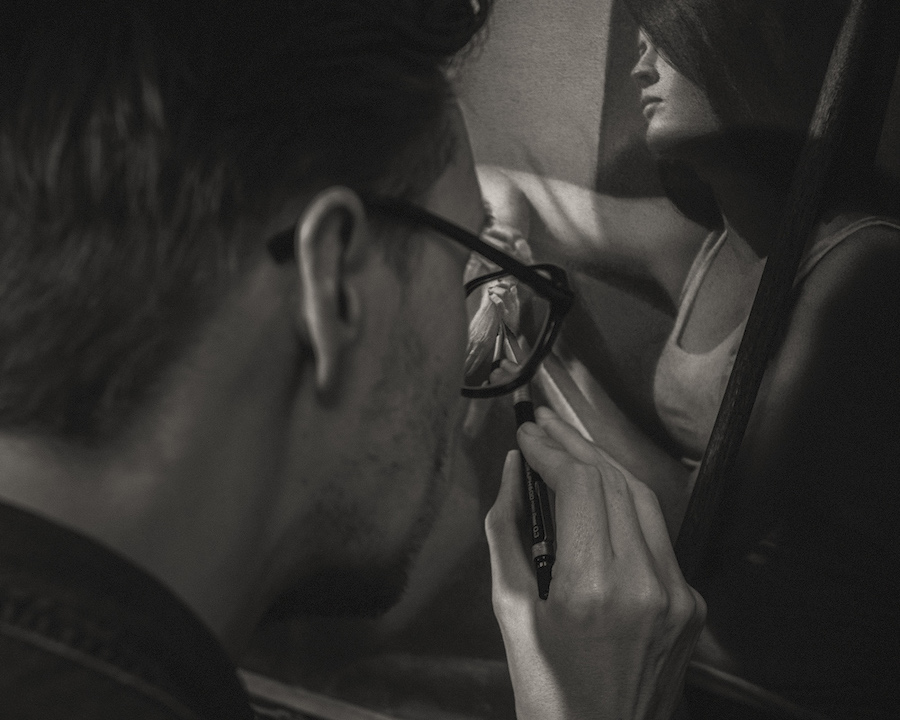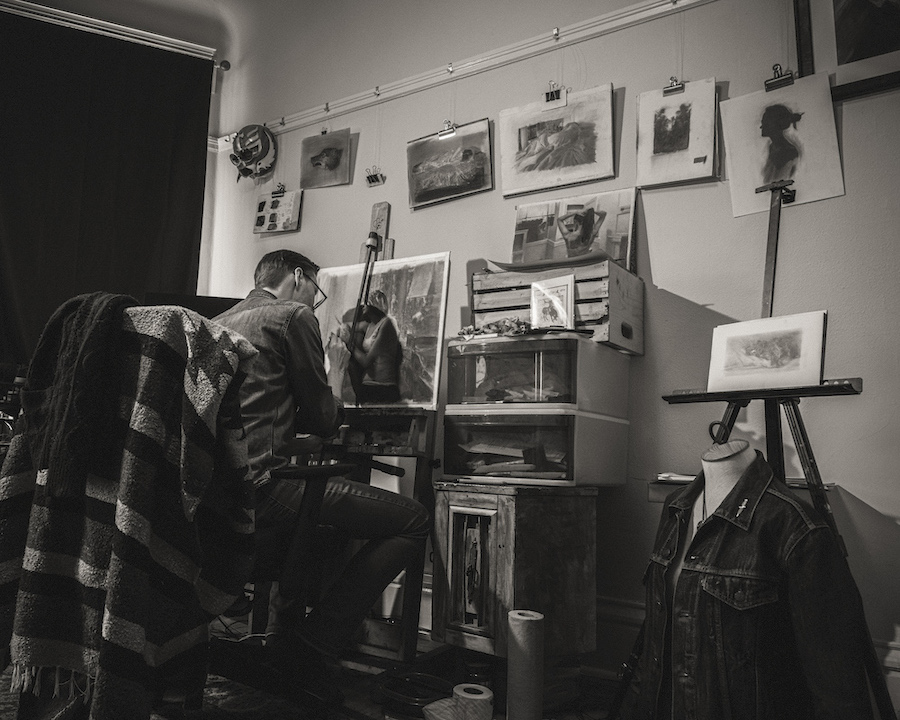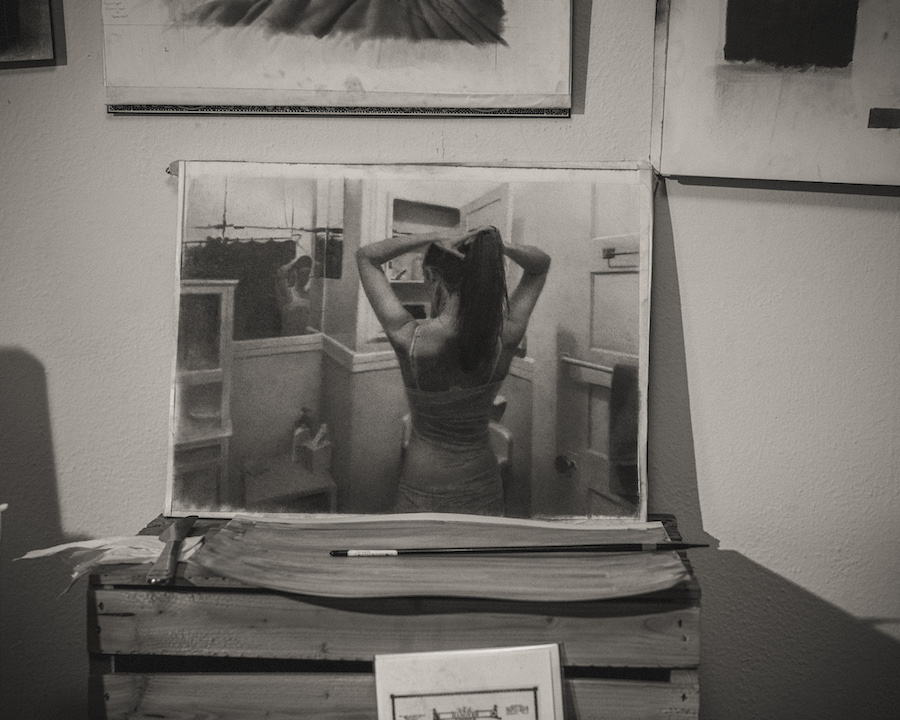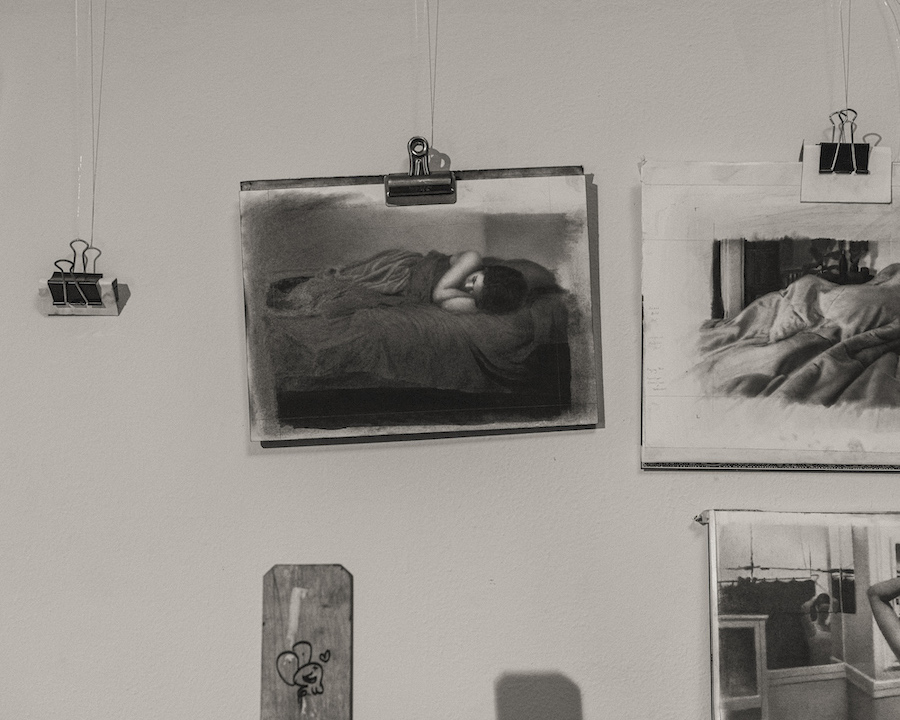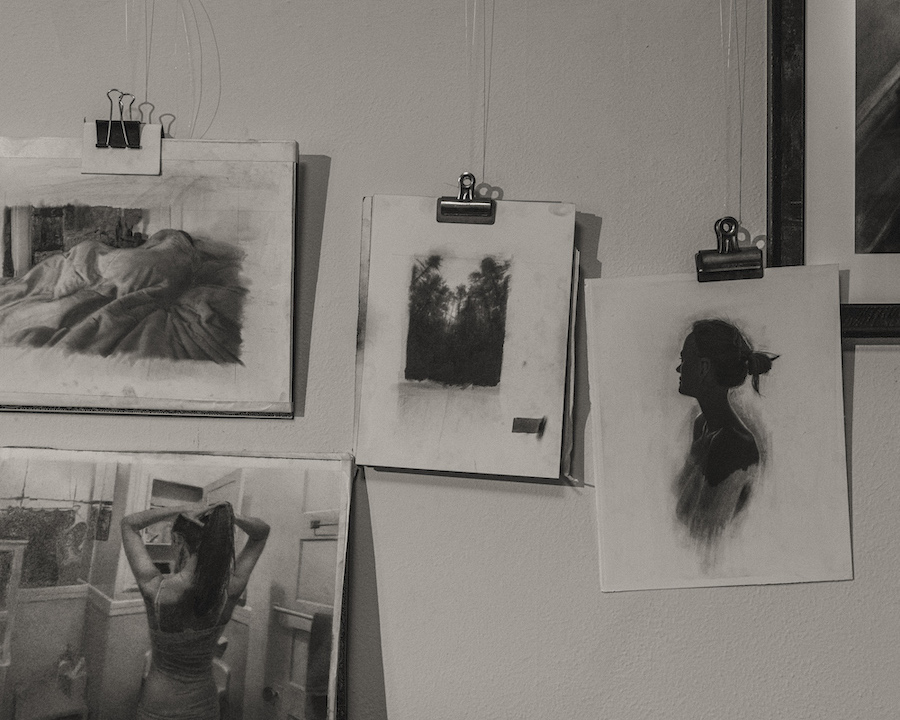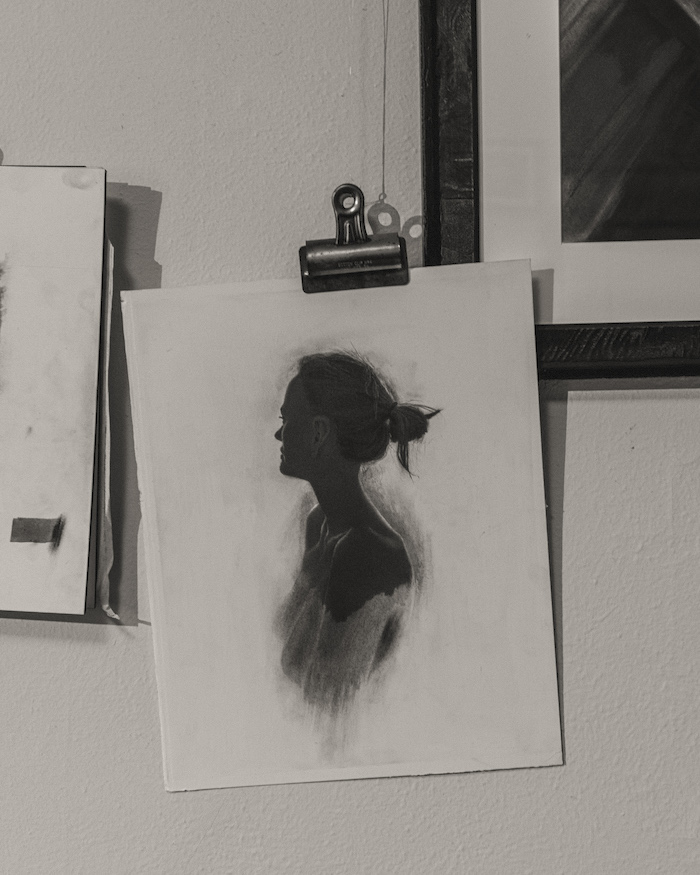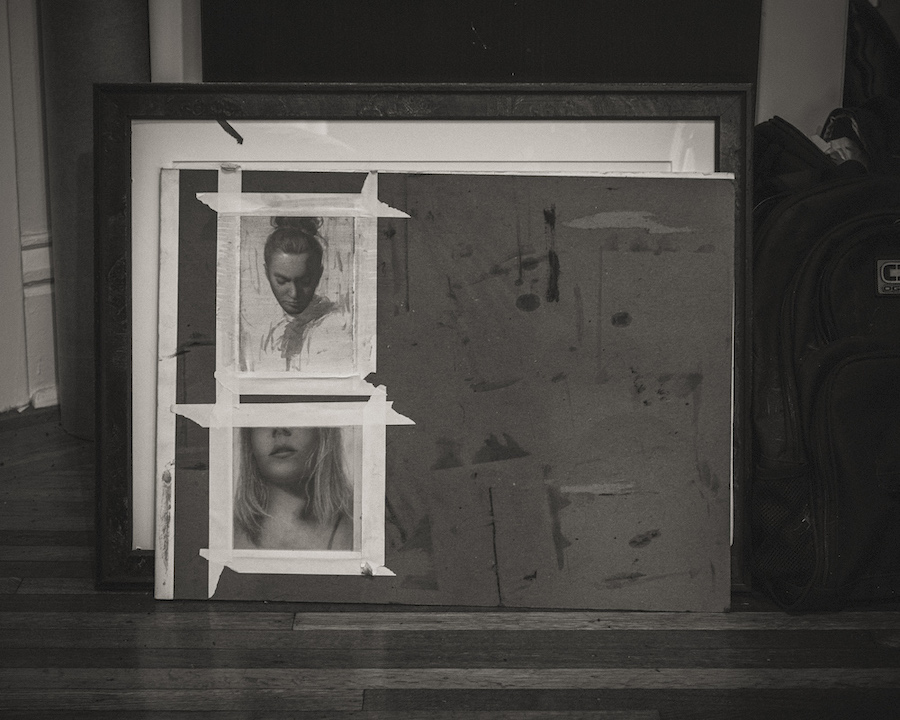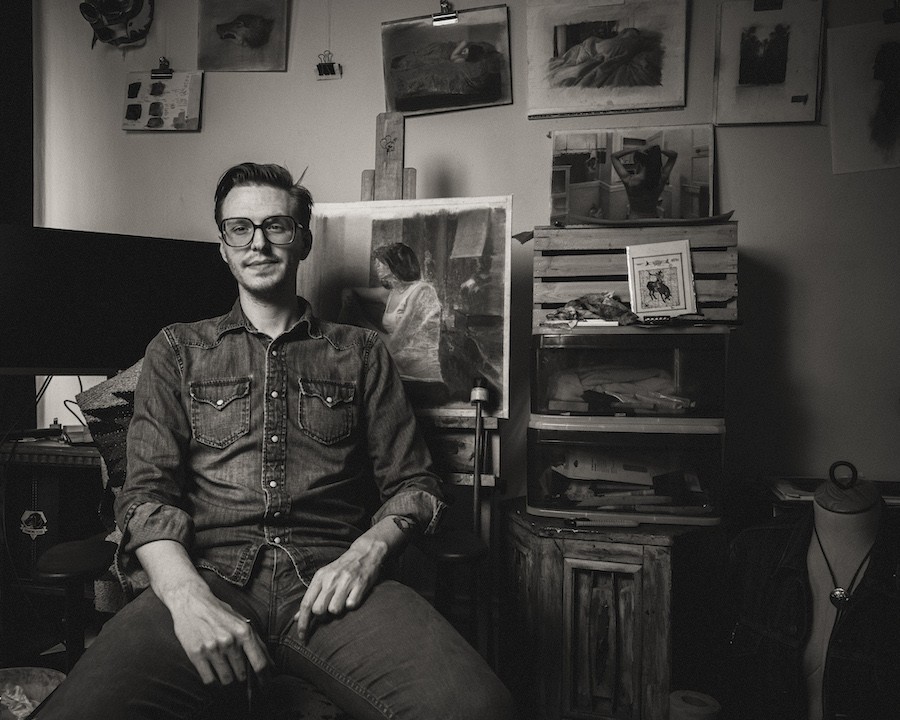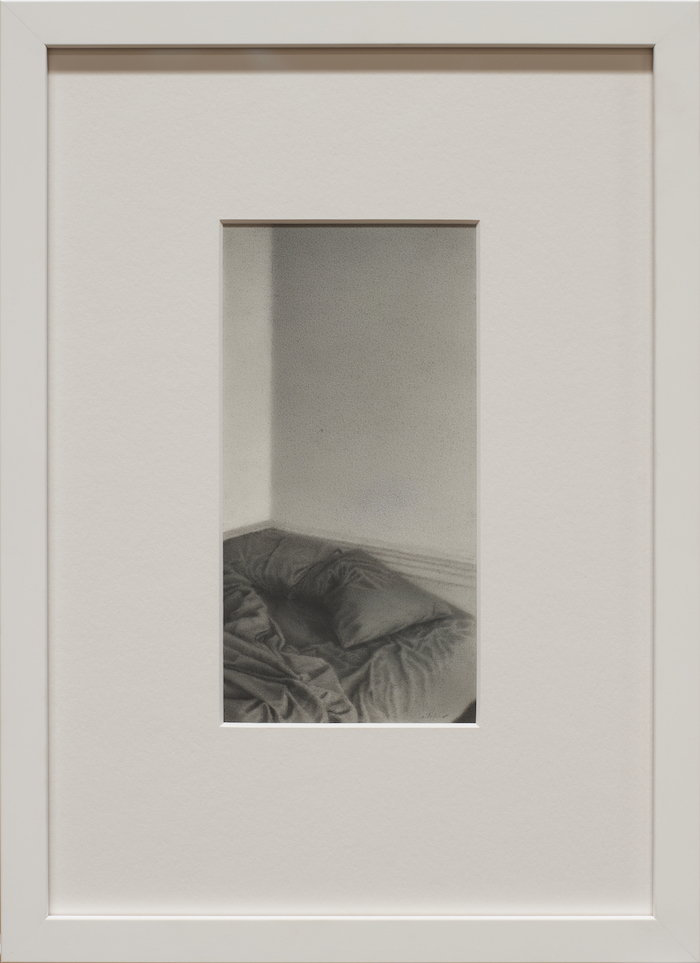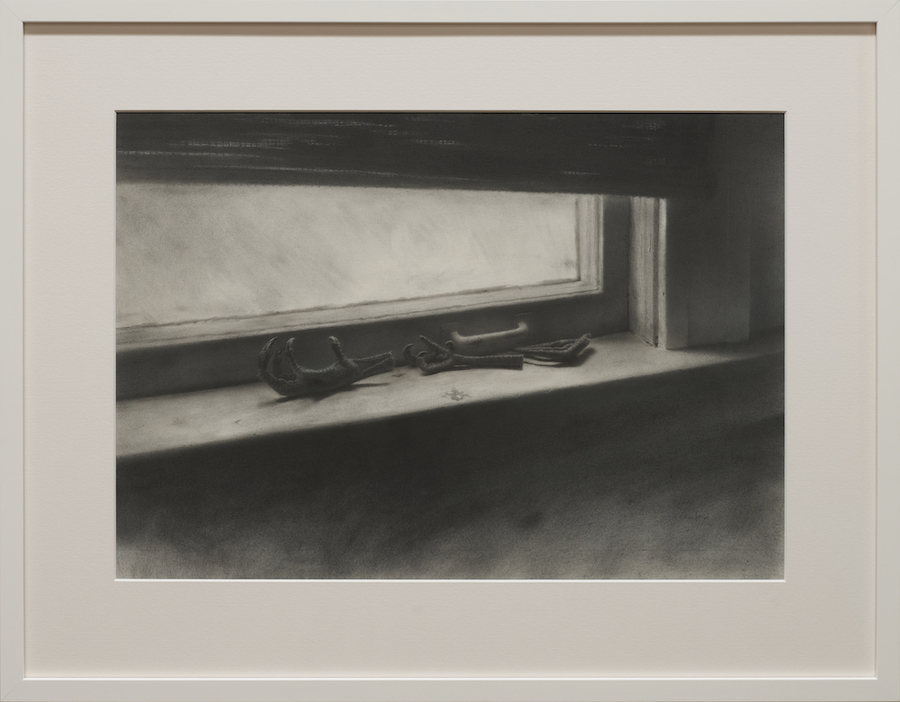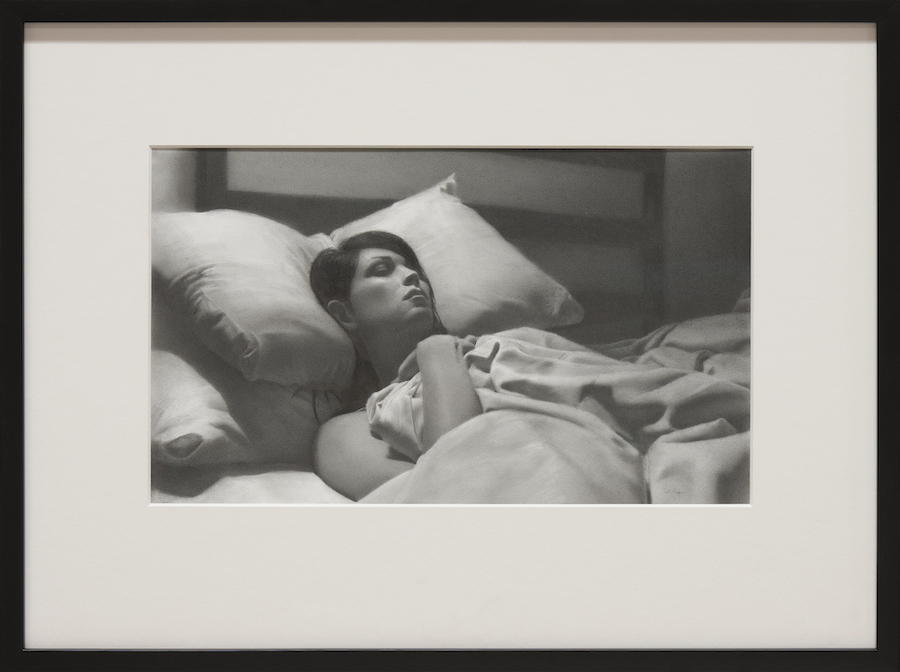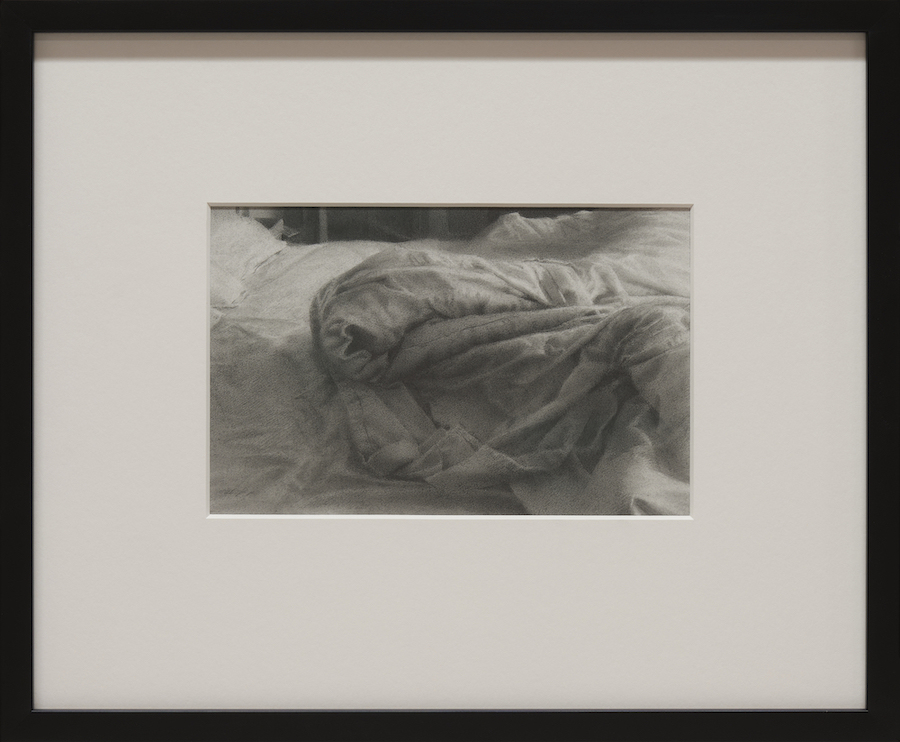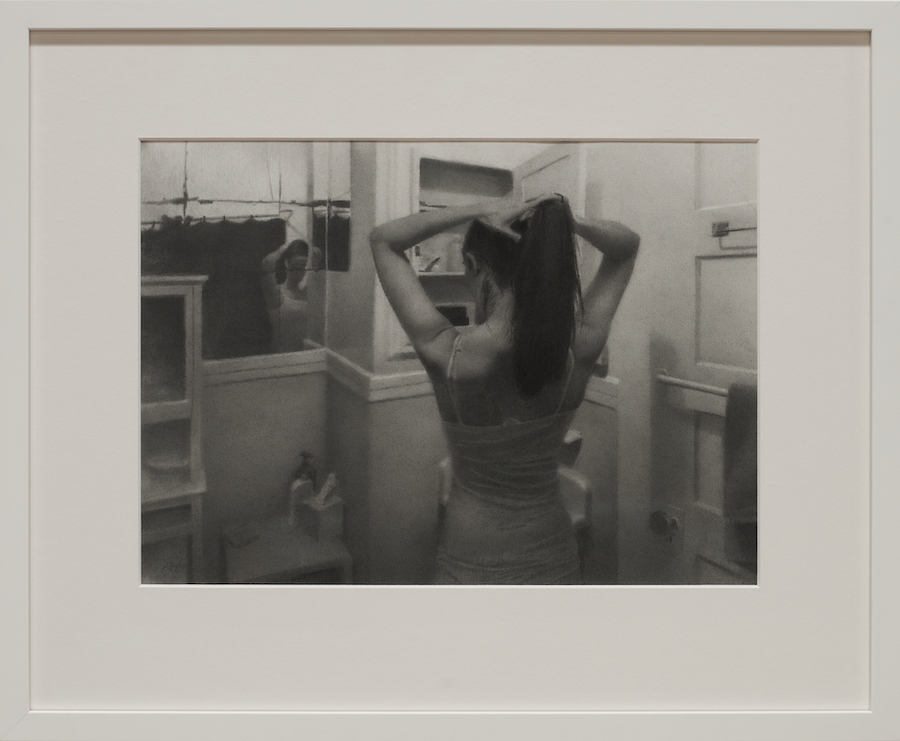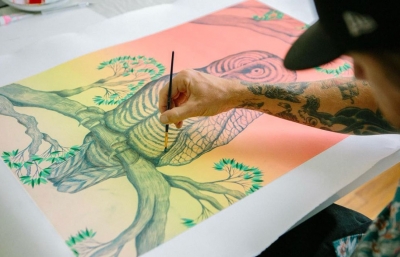On the occasion of San Francisco-based painter Zachary Oldenkamp's solo show, Mercy of the Mundane, opening at Harman Projects in NYC on August 6, Raul Barquet sat down with the the artist to discuss being drawn to grayscale, growing up in rural America and the meaning of the mundane.
Raul Barquet: How did your interest in art begin and what were your early steps in pursuing a career as an artist?
Zachary Oldenkamp: Growing up in a rural part of the United States, the art world was not very present outside of history books. Seeing the behind the scene featurettes on DVDs and learning about how people used drawings and paintings to create the visuals I was seeing on screen was when I started to see art used in a modern context. The idea of making art as a profession was so foreign to me, that I became completely enamored with the idea. Eventually I became so enveloped in exploring more about drawing and painting that when I was a senior in high school, I decided to completely change any previous life plans I had and move to San Francisco to pursue it.
In the past you've painted a good deal and utilized a much broader color palette. More recently however there has been a shift toward drawing in grayscale. Would you discuss the shift in media?
The theme and subject matter is tied to every part of the process and for me. In the past the subject matter I was tackling, especially the luchador masks, involved a lot of incredible materials and textures that needed color to be done justice and have the visual impact those pieces required. My technique with drawing is a very thoughtful and meditative thing. Thoughtfulness and taking time to reflect is a significant element of what is driving my current work.
How do you compartmentalize the work you do with videogames and your personal work? Do parts of them ever bleed into the other?
I really enjoy working in both fields even though the overall goals are very different. Doing concept art for games is all about working with a team to help realize a larger, collective goal. Personal work is more about the opportunity to show the things that are important to me. There's a lot of crossover in the use and practice of technical art skills. There are even some similarities in thinking about how a viewer will perceive what they are looking at even though, with video games, the goal tends to be much more direct.
When you're developing a drawing, what do you look for during the planning process?
Because the current body of work is monochromatic, I'm focusing a lot on compositions with a certain tonal range, as well as a sense of light that work well together to capture a specific mood or feeling I'm chasing. Oftentimes, I am drawn to the natural light from an early morning peaking through the windows and moving across the room or the more dim, warm lighting from a lamp in the evening. I think this is because those are the parts of my day that give me the most opportunity to experience these quieter moments.
Certain drawings in this body of work stand out from what I'm used to seeing from you. There are a number of pieces that avoid a human subject in favor of highlighting the folds of unmade beds. What spurred this decision to focus on these seemingly empty spaces?
While the spaces may be technically empty, my hope is that those works still have a very human presence. I think a figure can have a really heavy attachment to it and by removing it I wanted to try and abstract the narrative of the piece and focus more on the mood in a way that might give the viewer more room for their own experience and translation.
In your work you seem to be drawn to capturing these quiet solitary moments. What do you find so interesting about these parts of our lives?
Everyone’s life is full of different challenges,usually several at a time, and as I've gotten older I've found things to be more and more overwhelming. I think taking the time to dwell on and investigate these everyday areas of our lives has the potential to bring us a lot of clarity and serenity.
Your upcoming exhibition is titled Mercy of the Mundane, and having viewed the work I think it fits this body of work perfectly. How much of that is a reaction to the pandemic and how much was already inherent in your work?
I think a lot of the themes of stillness and intimacy were already present in my work but with the pandemic forcing a shelter in place, the "mundane" areas of our lives became an even larger focus of our world. With my daily experience shrinking to a single space it amplified my focus on finding the value in those small, everyday moments to maintain some sense of peace and reflection. When the pandemic started I had been living in the same apartment for 9 or 10 years. I started taking the time to really observe my surroundings and the specifics of where I had put things, why were they important to me, why would I keep them in certain places? I found myself sketching corners of rooms at different times of day constantly. Knowingly or not we design the spaces around ourselves in a very meaningful way. I find it to be an endless source of fascination.
Mercy of the Mundane opens August 6, 2022 at Harman Projects in NYC. All photography by Shaun Roberts



